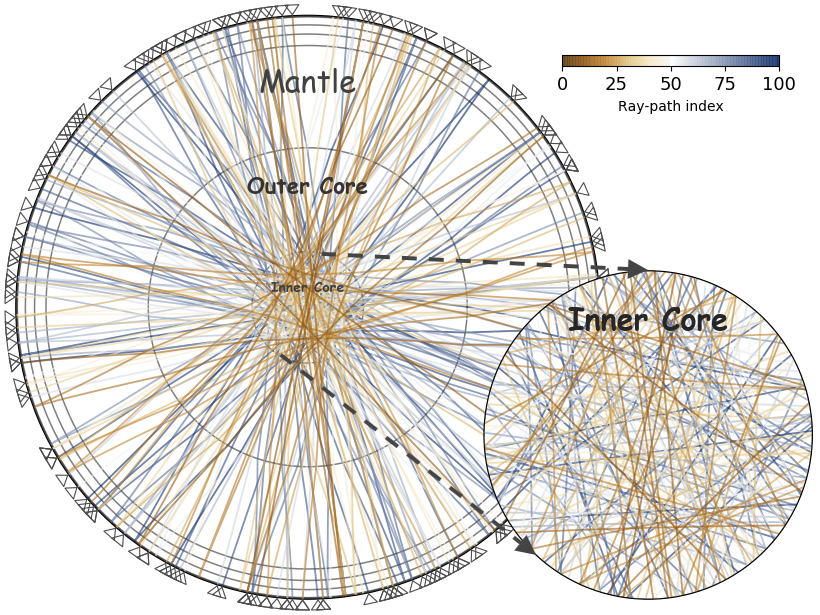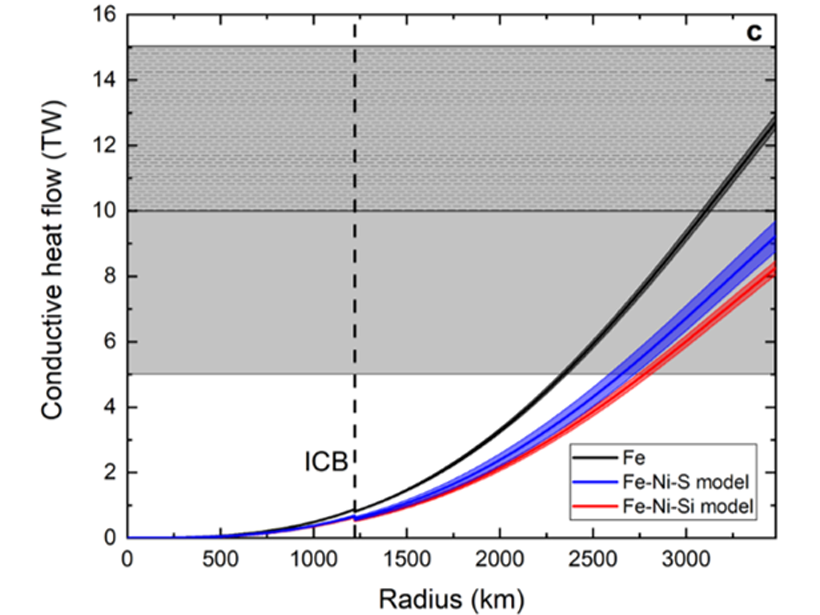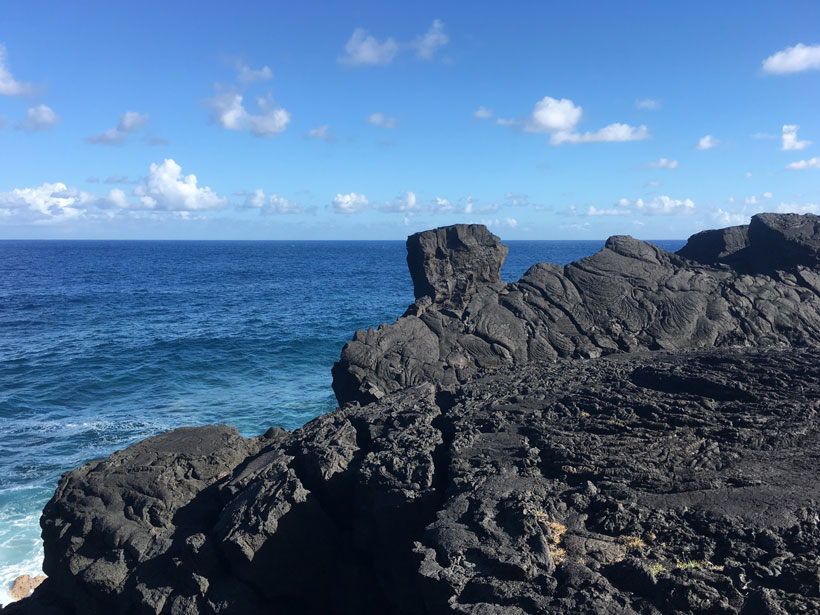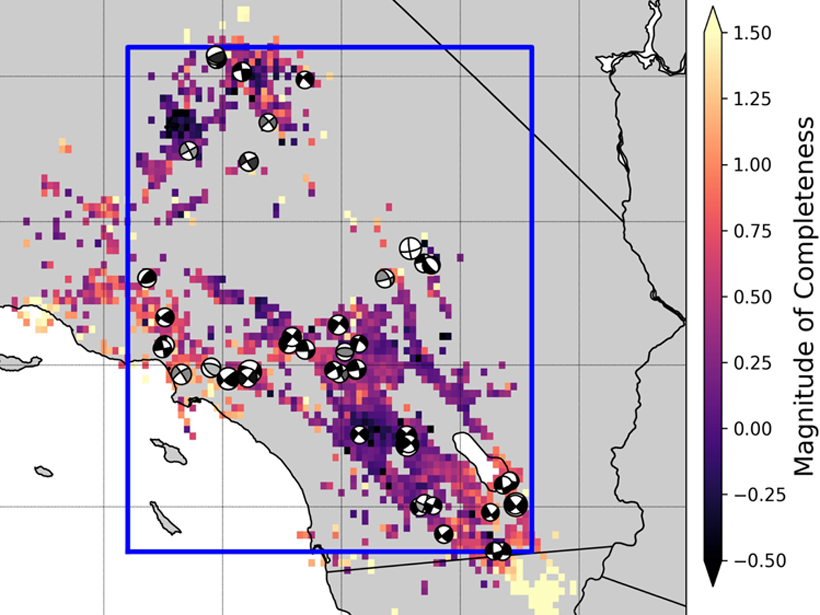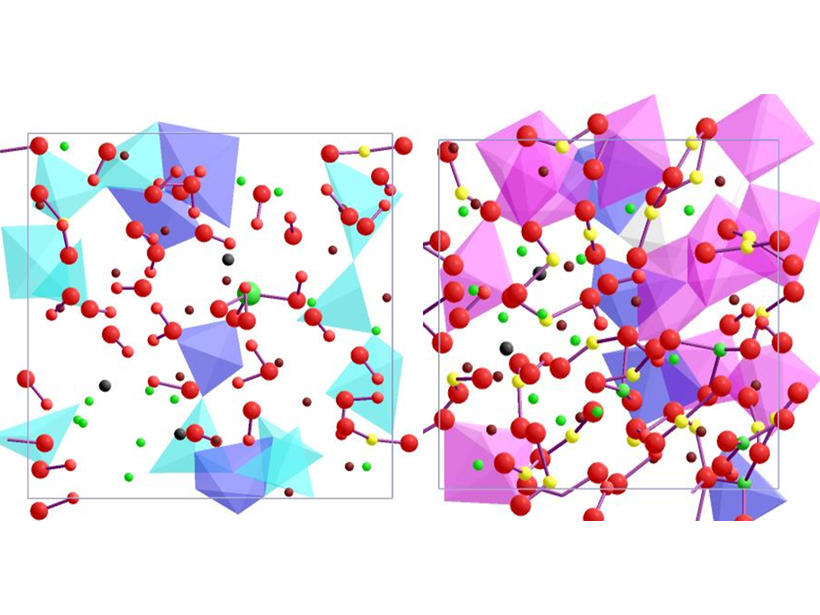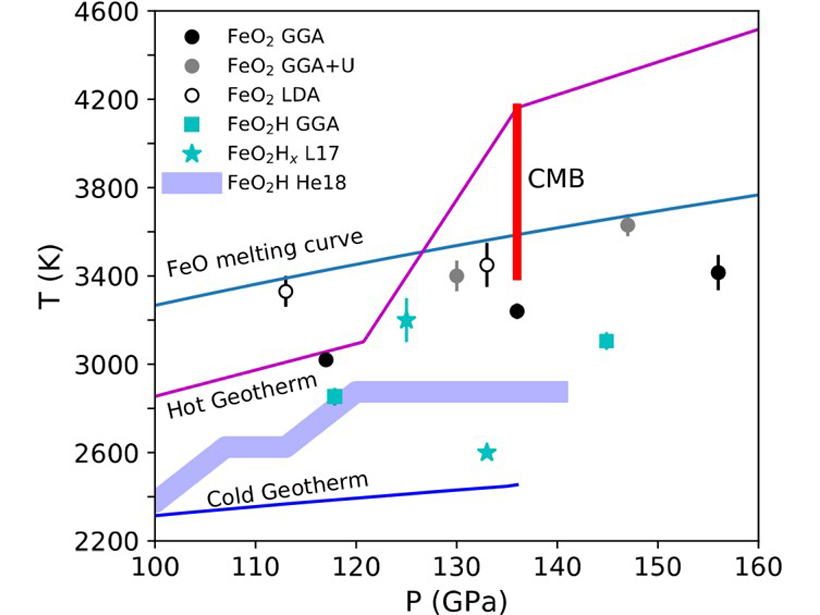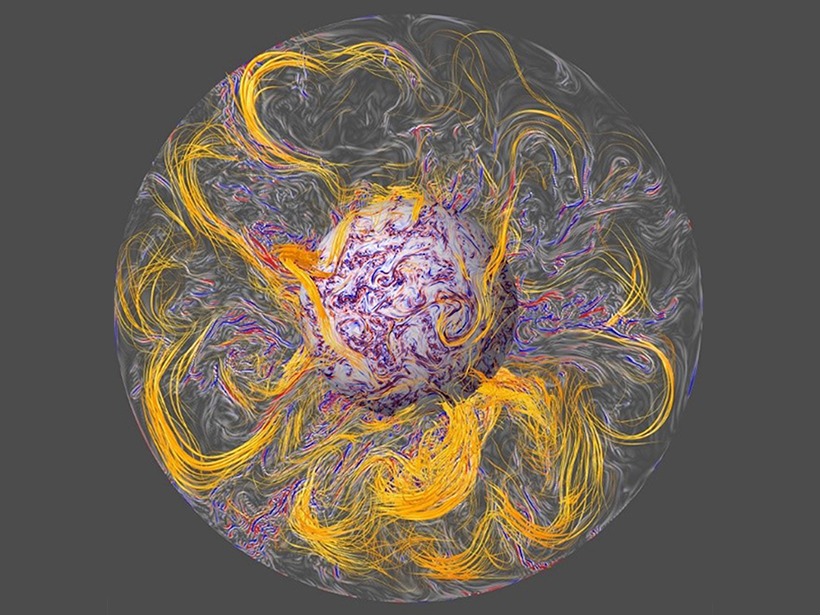How old is Earth’s inner core? High-pressure and high-temperature experiments suggest that our planet’s inner furnace may be much younger than expected.
Earth’s core
Earthquake-coda Tomography Boosts Illumination of the Deep Earth
A new tomographic method based on correlations of seemingly chaotic earthquake coda waves yields otherwise unobservable arrivals, thus greatly improving illumination of the deep Earth.
Thermal Convection Can Power the Geodynamo
New high-pressure experiments on fluid iron suggest thermal convection without compositional buoyancy is sufficient to drive the dynamo generating Earth’s magnetic field.
Leaky at the Core
New evidence from deep mantle plumes suggests that Earth’s liquid outer core might be leaking tungsten isotopes into the lower mantle.
Most Southern California Mainshocks Follow Foreshocks
New research using a highly complete earthquake catalog shows that 72% of M4+ mainshocks are preceded by foreshocks, implying that foreshock activity is much more prevalent than previously thought.
Hiding Deep Hydrous Melts at the Core-Mantle Boundary
Silicate melts containing H2O in the lowermost mantle are surprisingly dense and may stagnate there, trapping primordial volatiles and potentially causing some of the ultra-low velocity zones.
The Lower Mantle May Have a Wet Bottom
Molecular dynamics calculations suggest that molten hydrogen-bearing iron peroxide (FeO2Hx) may produce the ultra-low velocity zones that occur at the core-mantle boundary.
New Model Shines Spotlight on Geomagnetic Jerks
Scientists get one step closer to being able to predict jerks—notoriously capricious changes to Earth’s geomagnetic field detectable by satellites.
Paleomagnetic Data Hint at Link from Earth’s Core to Continents
Earth’s magnetic field waxes and wanes as supercontinents form and break up, suggests a new study postulating a direct connection between our planet’s crust and its core.
Earth's Wobbly Path Gives Clues to Its Core
Understanding the Earth Core and Nutation; Brussels, Belgium, 19–21 September 2016


